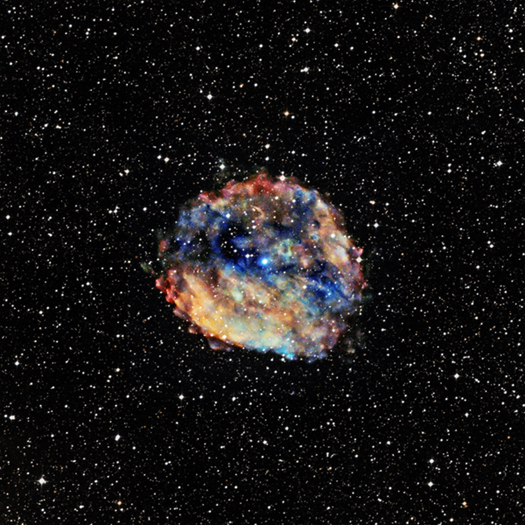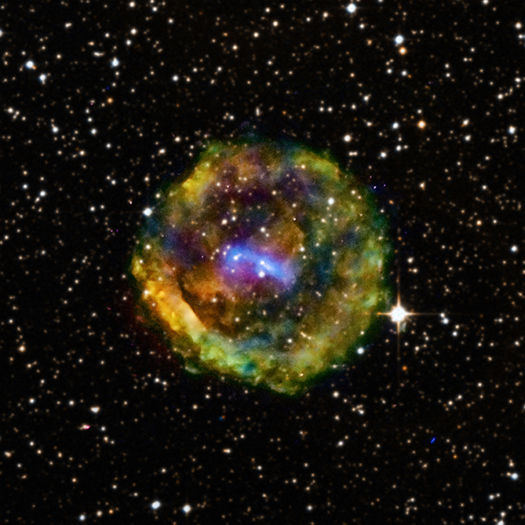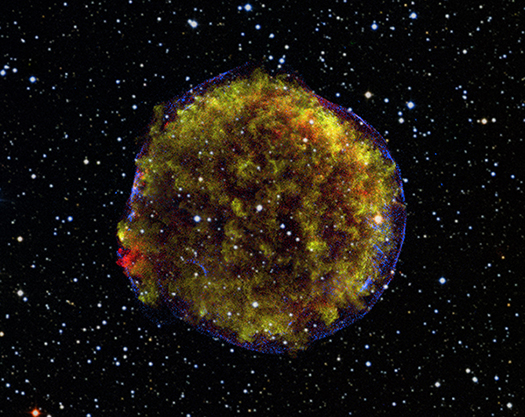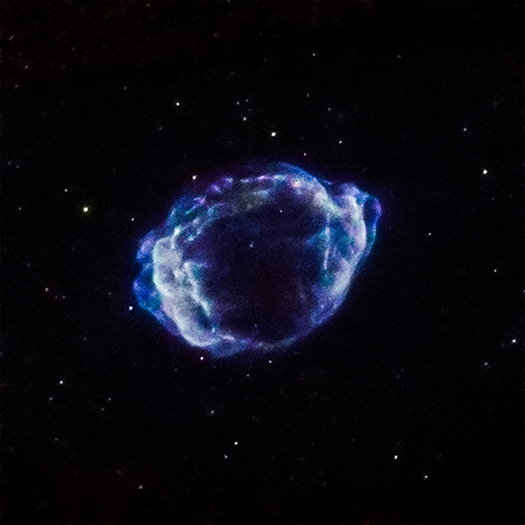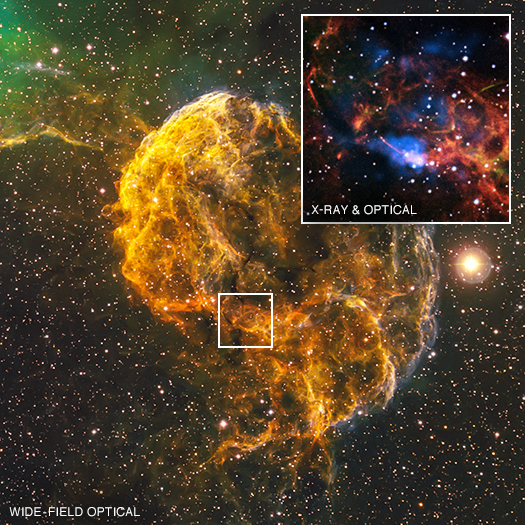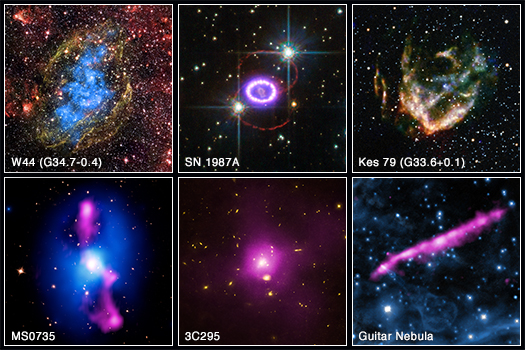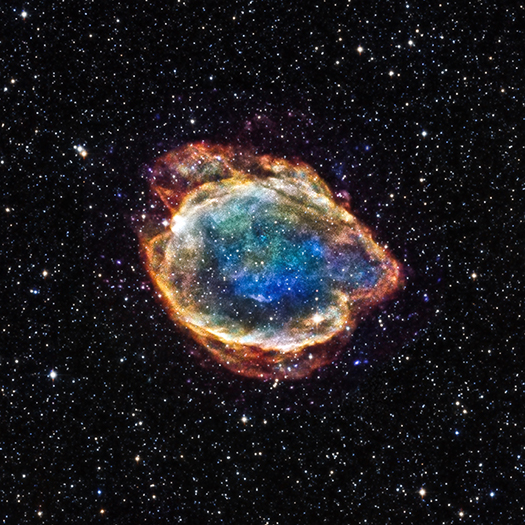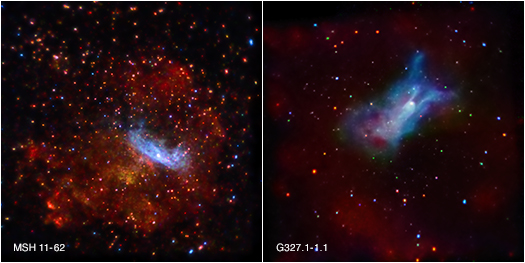Supernovas & Supernova Remnants
Visualizing Supernova 1987A in Three Dimensions

Salvatore Orlando
Our latest press release features work by Salvatore Orlando, an astrophysicist working at the INAF-Osservatorio Astronomico di Palermo in Italy. Salvatore and his colleagues have developed the first three-dimensional model of the famous object Supernova 1987A that links the supernova to its remnant, an accomplishment that will help scientists and the public explore this important stellar object like never before. We are very pleased to share answers that Salvatore has provided to our questions about his 3D modeling.
Salvatore graduated in physics from the University of Palermo and completed his PhD at the same university. During his PhD he spent part of this time at the Dept. of Astronomy and Astrophysics at the University of Chicago. Prior to his current position, he was a research fellow for two years at the European Space Agency (ESA), Space Science Dept. (Noordwijk, The Netherlands). His main research activity has been performed in the realm of optically thin astrophysical plasmas (more specifically solar and stellar coronae, supernova remnants) and in the field of thermal and non-thermal (synchrotron) emission processes.
Young Magnetar Likely the Slowest Pulsar Ever Detected
Using NASA's Chandra X-ray Observatory and other X-ray observatories, astronomers have found evidence for what is likely one of the most extreme pulsars, or rotating neutron stars, ever detected. The source exhibits properties of a highly magnetized neutron star, or magnetar, yet its deduced spin period is thousands of times longer than any pulsar ever observed.
Supernova Ejected from the Pages of History
A new look at the debris from an exploded star in our galaxy has astronomers re-examining when the supernova actually happened. Recent observations of the supernova remnant called G11.2-0.3 with NASA's Chandra X-ray Observatory have stripped away its connection to an event recorded by the Chinese in 386 CE.
Taking a Supernova into the Third Dimension

3D Supernova Remnant. Credit: NASA/CXC/SAO
Chandra Movie Captures Expanding Debris From a Stellar Explosion
When the star that created this supernova remnant exploded in 1572, it was so bright that it was visible during the day. And though he wasn't the first or only person to observe this stellar spectacle, the Danish astronomer Tycho Brahe wrote a book about his extensive observations of the event, gaining the honor of it being named after him.
Trigger for Milky Way's Youngest Supernova Identified
Scientists have used data from NASA's Chandra X-ray Observatory and the NSF's Jansky Very Large Array to determine the likely trigger for the most recent supernova in the Milky Way, as described in our latest press release.
What Spawned the Jellyfish Nebula?
The Jellyfish Nebula, also known by its official name IC 443, is the remnant of a supernova lying 5,000 light years from Earth. New Chandra observations show that the explosion that created the Jellyfish Nebula may have also formed a peculiar object located on the southern edge of the remnant, called CXOU J061705.3+222127, or J0617 for short. The object is likely a rapidly spinning neutron star, or pulsar.
Banking X-ray Data for the Future
Archives, in their many forms, save information from today that people will want to access and study in the future. This is a critical function of all archives, but it is especially important when it comes to storing data from today's modern telescopes.
Exploded Star Blooms Like a Cosmic Flower
Because the debris fields of exploded stars, known as supernova remnants, are very hot, energetic, and glow brightly in X-ray light, NASA's Chandra X-ray Observatory has proven to be a valuable tool in studying them. The supernova remnant called G299.2-2.9 (or G299 for short) is located within our Milky Way galaxy, but Chandra's new image of it is reminiscent of a beautiful flower here on Earth.
Supernova Shock Waves, Neutron Stars, and Lobsters
A supernova that signals the death of a massive star sends titanic shock waves rumbling through interstellar space. An ultra-dense neutron star is usually left behind, which is far from dead, as it spews out a blizzard of high-energy particles. Two new images from NASA's Chandra X-ray Observatory provide fascinating views - including an enigmatic lobster-like feature - of the complex aftermath of a supernova.

